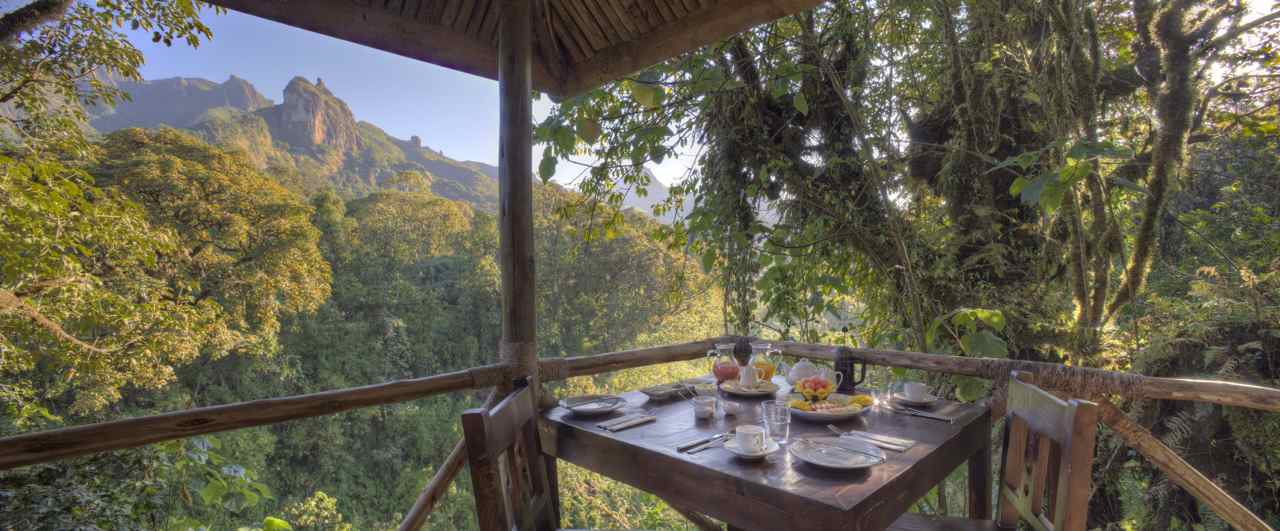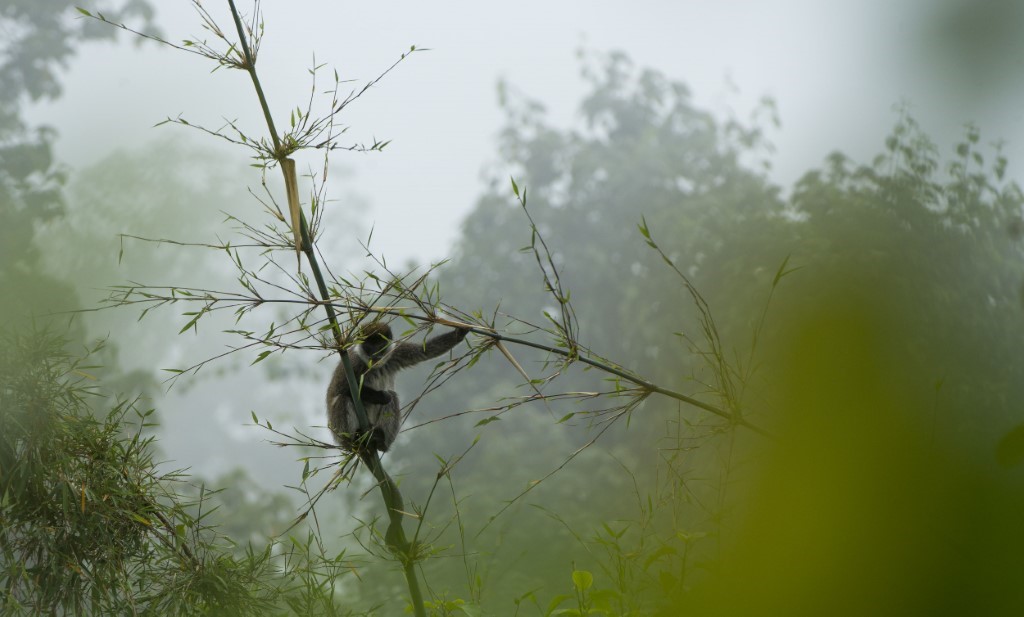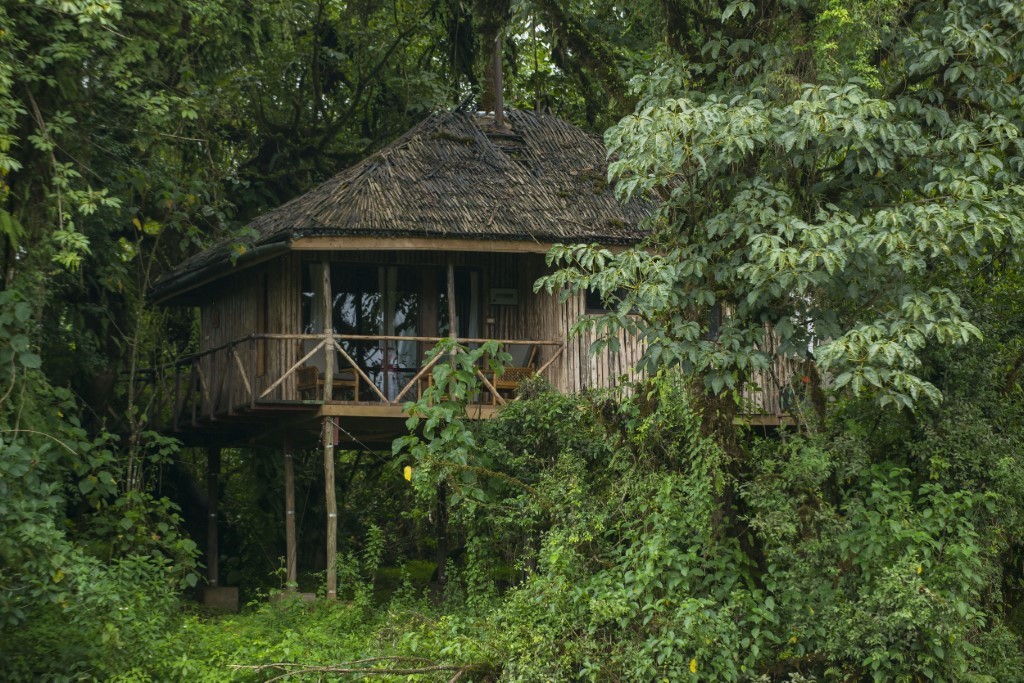I’ve loved forests all my life, and have been in many fine ones on five continents. My vote for most magical is the forests of Bale Mountains National Park, in south-east Ethiopia. Why so special? Beautiful, vibrant, atmospheric, with life of all kinds, and very rare: many unique species, and there are few other habitats like this worldwide.

If the idea of flying to Africa to support an eco-tourism project worries, you, I share the concern. I limit myself to one return air trip per year, and there are reasons why Ethiopia especially needs our support. This big country has many unique species and rare habitats – it also has one of the fastest population growth rates in the world, a terrifying deforestation rate, and a government with limited resources and many priorities.
The conservation needs in Ethiopia are acute, but they’ll only get support if there’s foreign money to support them. So eco-tourism, and support for European charities working here is crucial. That’s especially true because localised tribal conflicts have scared many tourists off visiting Ethiopia, although the popular areas like the Simien Highlands and Bale Mountains are hundreds of miles from any trouble.
Here’s a short walk in the Harenna Forest region of Bale, on a chilly, sunny January morning. Fording a small clear stream, we cross a soft, grassy meadow and see colobus monkeys leaping around high up in the massive hagenia trees, with their strange-shaped trunks and bunches of red flowers.
As we climb, the sheer diversity and profusion of vegetation is exhilarating. There are lobelias five metres tall, a variety of small flowers underfoot, giant creepers, purple flowers on the spiney acanthus. Many hagenia trees have thick multiple trunks from ground level, which rise, merge, and flow into strange curved shapes. It feels like the setting for a fairy tale or a Tolkien saga, such is the magic.
 Deeper in, when we pause, we see small groups of Bale monkeys, unique to this region, prancing through the bush as they raid the bamboo groves for breakfast. The melodic call of the Abyssinian catbird is a thrilling sound amid the many birdsongs. There are over 320 bird species in the National Park. Above us, the forest covers the steep slopes of a huge escarpment, with the Sanetti Plateau at 4,000 metres above it.
Deeper in, when we pause, we see small groups of Bale monkeys, unique to this region, prancing through the bush as they raid the bamboo groves for breakfast. The melodic call of the Abyssinian catbird is a thrilling sound amid the many birdsongs. There are over 320 bird species in the National Park. Above us, the forest covers the steep slopes of a huge escarpment, with the Sanetti Plateau at 4,000 metres above it.
By now, you may be waiting for a bad news story and a plea for help – and so there is – but this also a tale of foresight and some progress. A British naturalist, Leslie Brown, was the catalyst in National Park designation in 1969. Even then, he predicted that population growth would drive more people and their livestock into these forests. Climate change has aggravated this further, and by the early 2000’s the deforestation rate was a terrifying 6%.
The importance of the Bale Mountains is not only about the rarity of tropical-alpine rainforest, and the unique plant and wildlife species: the rivers rising here provide the water supply for 12 million people in Ethiopia, Kenya and Somalia. Local and national government recognise the importance of this situation, and are working with several NGO’s on it.
The quaintly named Frankfurt Zoological Society (FZS) is one of the largest German conservation charities. They are leading the work of supporting the National Park Rangers, and helping to provide equipment for them. The 78 Rangers have a massive job on hand: including preventing illegal forest clearance, new settlers, and poaching – in an area of 2,400 square kilometres.
I spent some time with Neville Slade, the FZS Manager for their work in Bale. He is deeply concerned: “we know there is significant illegal clearance going on still, and the drought south of here means there is serious pressure from people and livestock trying to move in.” Along with deforestation, another big issue is degradation of the forest: there is now overgrazing by cattle in sizeable areas: as a result, there is very little regeneration, and the age profile of the trees is unbalanced.
I wholly share Neville’s sense of urgency, and I asked what help I and others in Europe could give. He said: “we urgently need more funds to enable the Rangers to protect the Park”. A big step forward in 2014 was that the Park was gazetted, i.e. given legal status. This means that the Rangers can now get local police involved, who can prosecute: but this all takes time and resources. If you want to support FZS’ work, see www.fzs.org
There is a major project to protect the watersheds through Natural Resource Management in the large and sensitive areas of the Bale Mountains outside the National Park boundary. This EU-funded work involves FZS, a local charity SOS, and Farm Africa: an innovative UK charity for whom I have been doing voluntary training and consulting since 2011.
An inspiring feature of the work in Bale is that it is constructive as well as defensive. For example, eco-tourism was recognised some years ago by Government and the NGO’s as a valuable element in strategies to show local people how they can gain more income from preserving the forest than by their dominant income source, grazing livestock.

Since I first came to the Bale Mountains in 2011, an outstanding eco-tourism facility has opened: the Bale Mountain Lodge, in a beautiful location in a clearing in the Harenna Forest, within the National Park. It’s completely off-grid, with a 20 KW micro-hydro scheme for electricity, and a biogas digester for waste. The lodge is beautifully designed, and made largely from local materials with local labour. They aimed to employ 67% of staff from the local community, and the actual figure is 82%.
The lodge pledges 3% of gross revenue to local conservation, and also has a Community Fund, which guests can donate to: its aims are set with the local village, and have included improving its health clinic and enlarging the school.
Most of the bedrooms are self-contained cottages, or tukuls, many with a deck overlooking a stream. While you have dinner, staff light your wood-burner and provide a hot water bottle. As you can imagine, it’s a delight to stay in a place where everything’s done well, and where you know your visit is helping the forest and the local villagers.
The creators of the Lodge are Guy Levene, a British ex-Army officer, and his wife Yvonne. They have shown great tenacity to create and sustain a place of this quality. The rates are high, but good value: they include all food, drinks, and use of the naturalist team as guides. You can see more at www.balemountainlodge.com
A quite different eco-tourism project has just opened in Manyete, a village in the forest south of the Park boundary. FZS have helped locals to create a visitor centre which will offer the traditional coffee ceremony, and guided tours of the village and the forest. It will also sell local products, especially the wild coffee which grows here. Along with a campsite, these are all intelligent, low-impact ways of adding value to the forest. Wild honey is another established enterprise, and ideas like herbal medicines are being explored.
PM readers will probably detect a lot of permaculture thinking here. It would be intriguing to see if it could be more formally applied: but what makes the Bale Mountains so fascinating and so delicate is a three-way juggle between an ecosystem which is fundamentally wild, the needs of the people living in it, and the wisdom and funding from Government and NGO’s. There is hopefully big learning here on a wider scale.
